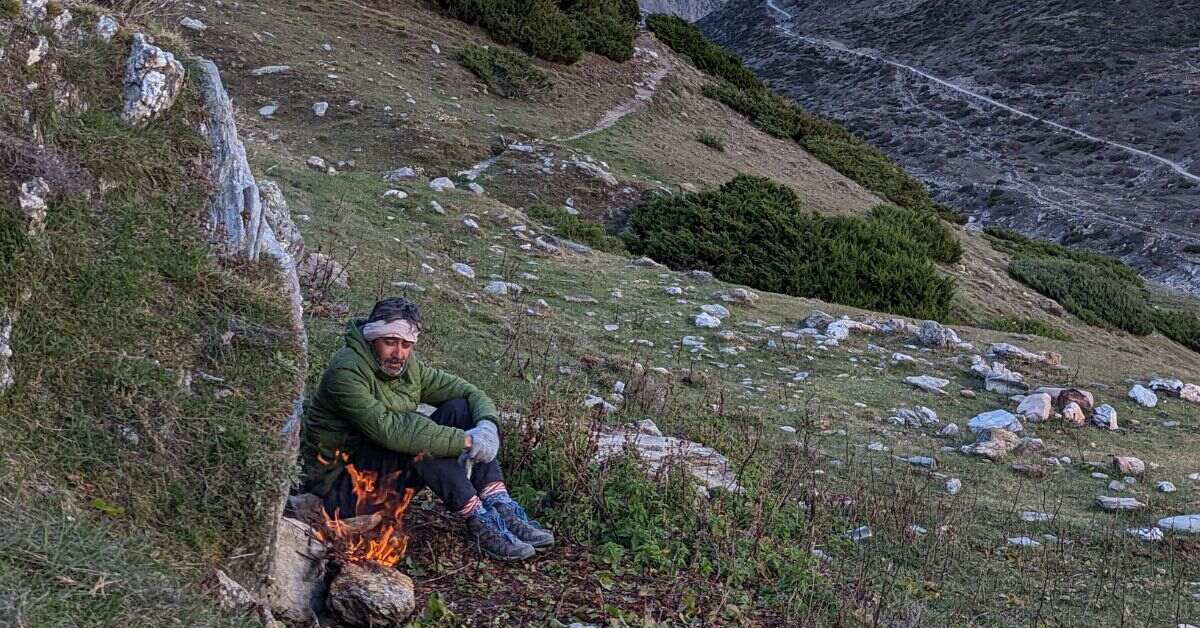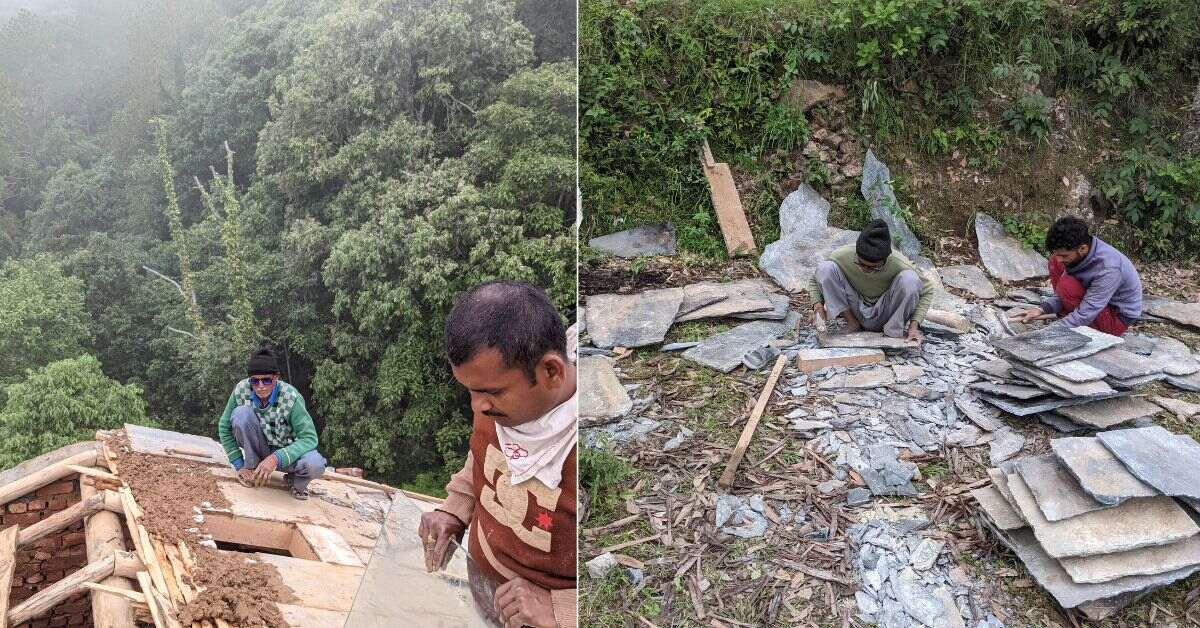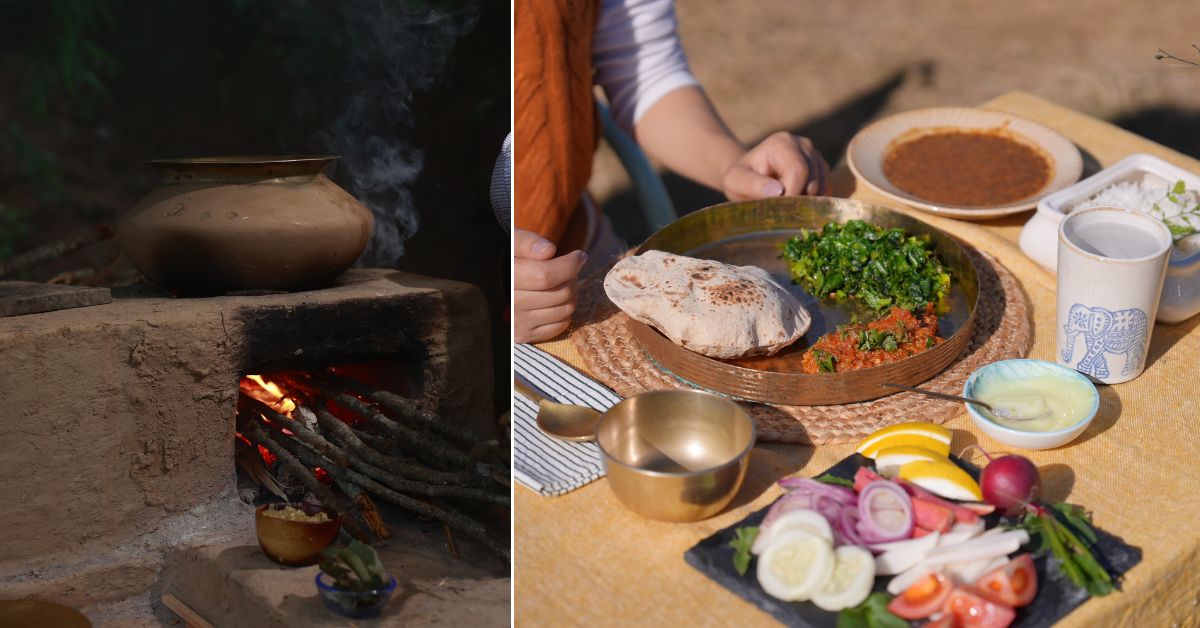For Delhi’s Ashish Verma, long weekends and holidays meant an escape to the wild in the mountains. More than a decade back in 2012, he came across a magazine that featured exclusive locations for an enchanting experience in the quaint hilly regions of Uttarakhand.
This was the first time that he read about Jilling, a remote village located in the Kumaon ranges in the lap of the Himalayas.
“I was so fascinated by the place that I planned a trip to the village. It was surrounded by flora and fauna. Having lived all my life in the city, I was moved by the slow pace the village offered. I felt secure in its environment,” Ashish, now 42, tells The Better India.
“Also, the village offered a spectacular view of the mighty Nanda Devi peak (the second-highest peak in India). I wanted to build a home where I could look at the serene mountains every day,” he adds.

Since then, Ashish started visiting the village thrice a year. Eventually, in 2020, he moved to the village.
“Once you are bitten by the mountain bug, you won’t be able to let go of it,” he smiles.
Today, he has built himself a cottage homestay — The Nanda Stone — named so after the foundation stone that he carried from his trek to the base camp of the mountain. The home is designed in such a way that every corner of the cottage offers him the sight of the majestic Nanda Devi.
Ashish has opened this homestay for travellers in search of a riveting experience. We track his journey of quitting urban life and establishing himself a home amidst the forests.

As mountains were calling
In 2004, after completing his higher studies in hotel management, Ashish started working with the Taj Hotel and later went on to work with the Hyatt hotel and Carnival Cruise Line.
Ashish, who currently works with Radisson as a consultant, says that he never aimed at running a homestay, until the COVID-19 pandemic when he was stuck in the village. “I was so happy that I didn’t have any work then and all that I had to do was wake up to the beautiful view of the hills and lead a slow life,” he adds.
Ashish had understood that it was finally time for him to move to the hills, permanently. So he bought a small piece of land in Jilling and started working on giving life to his dream with the help of local people and his friend, Daya.

Being an advocate for sustainable development, he went on to build his house using the traditional architectural methods of the Kumaon region. For instance, instead of using cement, he used mud, cow dung, repurposed old wood, rock, and stones to construct the house.
On asking what are some alternatives to cement, he adds, “We did not use cement at all. We used a mixture of mud, bhusa (hay), and cow dung to make the walls. Additionally, I also adopted age-old practices of lipaai [paiting walls with cow dung and water]. This provides good thermal insulation and keeps the house warm in winter and cool in summer.”
“We used stone slates to make slanted roofs with large sunroofs that let in a lot of natural light during the day. Sunroofs help us save energy as we do not need any power between 7 am and 3 pm. These sunroofs also allows you to see the stars at night,” he explains.
Spread across an area of 2,000 square feet, the Nanda Stone is a two-storey home with three bedrooms. It took Ashish a year to construct his sustainable homestay. After getting his dream home constructed, he opened its doors to welcome the travellers.

Bird bathing, fishing, cooking on chulhas, & more
Nestled in the middle of a jungle, the homestay is located near several waterfalls and streams, making it a perfect base for fishing and picnics. Ashish takes his guests for village walks, fishing, bird watching, and bird baths.
Coming back with their catch, together they cook food on traditional open-air chulhas. This curates cooking experiences for the guests and helps them learn the ways of the jungle.
Other than this, the guests are offered the local feast of Kumaoni thali that comprises mandua roti, gutka aloo, pahadi daal, linguda (fiddlehead ferns) ka saag, pahadi raita, and laal chawal ki kheer.

Last year, Ashish hosted about 55 guests. He says he is very peculiar about selecting his guests. “This is not a hotel, this is a home. I share my space with my friends and with people who know how to respect nature and sustainability. I do not entertain anyone just because I want to generate revenue,” he says.
“Also, with limited people, I can focus better on helping a handful of people truly experience rural, mountain life. I ensure that when my guests unlock the house, they should feel it is their holiday home,” he adds.
Highlighting challenges in running the homestay, Ashish says, “Like any other hilly area, we also face water scarcity at times. To overcome this, I have set up a rainwater harvesting system with a tank capacity of 20,000 litres. We have a small stream in our home that acts as our drinking water source.”
Keeping aside the shortcomings of living in a hill village, Ashish says, “I am glad that I made the right decision. This experience changed me as a person. The life in the hills mellows you down. You start looking at your problems differently, you start respecting and sharing your spaces. It helps you grow as a person, and for me, it was such a beautiful journey.”
“Today, I have built a life among people who once were strangers. Now, we celebrate festivals and birthdays together. However, we socialise in subtle ways, very different from my city life, which I do not miss at all,” adds Ashish, who is now awaiting the first snowfall of the year.
Edited by Padmashree Pande. All photos: Ashish Verma.